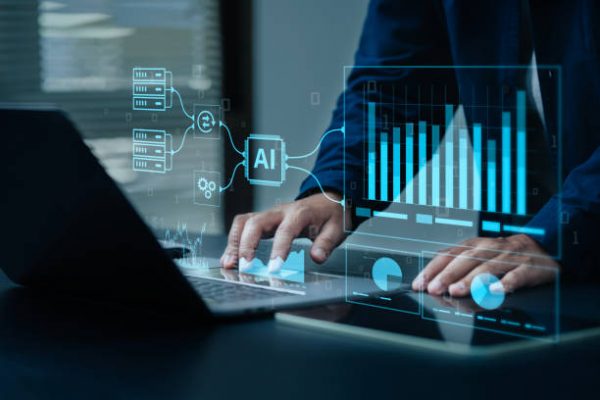
- April 14 2025
- SFI Solution Team
How AI-Powered Predictive Analytics Enhances Business Operations
In the rapidly evolving digital economy, companies are progressively adopting artificial intelligence (AI) to enhance efficiency, foster innovation, and stimulate growth. One of the most revolutionary AI technologies is predictive analytics, which utilizes historical data, machine learning algorithms, and statistical methods to anticipate future results. When incorporated into business operations, AI-driven predictive analytics serves as a strategic resource that can greatly refine decision-making, optimize processes, and boost overall performance.
What is AI-Powered Predictive Analytics?
AI-powered predictive analytics combines machine learning, data mining, and statistical modeling to analyze current and historical data and predict future events. Unlike traditional analytics, which often provides insight into what has happened, predictive analytics focuses on what is likely to happen. This forward-looking capability allows businesses to anticipate trends, identify risks, and uncover new opportunities.
Benefits of AI-Powered Predictive Analytics in Business Operations
1. Improved Decision-Making
One of the primary advantages of predictive analytics is enhanced decision-making. By providing accurate forecasts and data-driven insights, businesses can make more informed strategic decisions. Whether it’s forecasting demand, optimizing pricing strategies, or planning inventory, predictive analytics empowers leaders to act with greater confidence and precision.
2. Operational Efficiency
Predictive analytics helps businesses identify inefficiencies in their operations and suggest optimal solutions. For example, in manufacturing, predictive maintenance can foresee equipment failures before they occur, reducing downtime and maintenance costs. In logistics, it can optimize delivery routes and schedules, improving speed and reducing expenses.
3. Enhanced Customer Experience
AI-driven predictive models can analyze customer behavior and preferences to personalize marketing efforts, predict churn, and enhance customer service. Retailers, for example, use predictive analytics to recommend products based on previous purchases, boosting customer satisfaction and loyalty.
4. Risk Management
Predictive analytics is crucial in identifying and mitigating risks. In finance, it can detect fraudulent transactions, assess credit risk, and forecast market trends. In cybersecurity, AI models can predict potential security breaches and suggest preventive measures.
5. Revenue Growth
By uncovering patterns and predicting future trends, businesses can identify high-value opportunities and optimize their sales and marketing strategies. This leads to increased revenue through better targeting, conversion, and customer retention.
Key Industries Benefiting from AI-Powered Predictive Analytics
-
Retail : Personalized shopping experiences, inventory optimization, and dynamic pricing.
-
Healthcare : Patient outcome prediction, resource allocation, and preventive care strategies.
-
Finance : Fraud detection, credit scoring, and algorithmic trading.
-
Manufacturing : Predictive maintenance, supply chain optimization, and quality control.
-
Telecommunications : Customer churn prediction, network optimization, and service personalization.
Implementing AI-Powered Predictive Analytics
Successfully implementing predictive analytics requires a strategic approach :
-
Data Collection and Preparation : Ensure access to high-quality, relevant data.
-
Tool Selection : Choose the right AI and analytics platforms that align with business goals.
-
Model Development and Training : Use machine learning algorithms to develop models tailored to specific operational needs.
-
Integration with Business Systems : Embed predictive models into existing workflows and decision-making processes.
-
Monitoring and Optimization : Continuously monitor model performance and update based on new data and changing conditions.
Future Outlook
As AI technologies continue to evolve, predictive analytics will become even more sophisticated and accessible. With advancements in natural language processing, deep learning, and real-time analytics, businesses of all sizes will be able to harness predictive power to drive innovation and maintain a competitive edge.
Conclusion
AI-powered predictive analytics is revolutionizing business operations across industries. By turning data into actionable foresight, it enables companies to anticipate changes, optimize resources, enhance customer satisfaction, and achieve strategic goals. For businesses aiming to thrive in the digital age, investing in predictive analytics is not just an option—it’s a necessity.
Previous Post